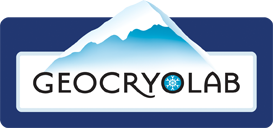Blog – by Isabelle de Grandpré
August 18, 2015 in post by de_Grandpré.I
August 14, 2015
It always makes me feel the same when I get in the field: mixed feelings of stress and serenity. Our field mission was clear: detect the presence of ice wedges using different techniques, in probably the most remote place accessible by road in the entire Yukon.
It is by riding our Canadream Camper and our beautifully clean white pickup truck that we hit the road to km 124 of the Dempster Highway . The days go by but not alike: heat waves, snow, high winds, annual gathering of mosquitoes and black fly – a good idea this camper finally.

The essential and much appreciated field pickup truck
How are detected ice wedges when its not possible to see them on the ground? Easy. We need ground-penetrating radar, a drill, a lot of patience and a good mental balance (especially when it comes to do 200 m of GPR transect with antennas that require step size of 10 cm).

Georadar in action !

Permafrost extraction using the convenient portable drill
After 5 days of tussoks, of eating good dehydrated food (rice with pieces of chicken or rice with grilled chicken tonight?), of discovering many answers but more questions, we left to civilization with 4 books well filled of field data that will reveal all their magic during the analysis process.
I think there is a fine line between a hard a memorable fieldtrip: but the immense beauty of the places, the adventure and especially the working team are usually putting the experience on the memorable side.
Thanks Fab, Lyna and Manu, anytime!
Ce message est également disponible en : French

Blog – by Isabelle de Grandpré
by
Geocryolab
is licensed under a
Creative Commons Attribution-NonCommercial 4.0 International License
.
